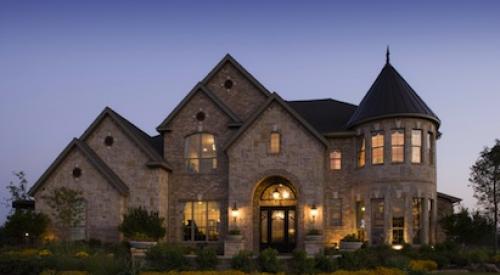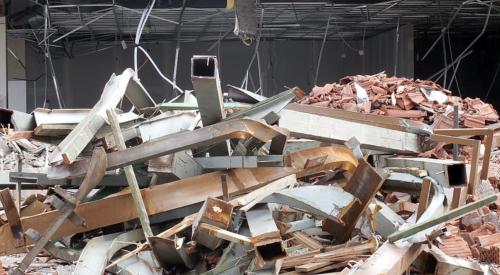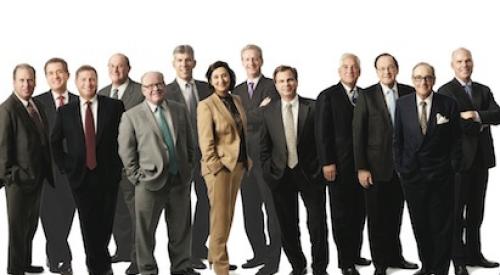A deep-seated financial resource for home builders was uprooted like an oak tree in a Texas twister after the savings and loan industry was torn to shreds. The U.S. languished under the thunderstorm of a rolling recession that ultimately saturated the entire U.S. economy. But a silver lining in the clouds was waiting to be revealed.
Times were indeed turbulent between 1986 and 1995. The winds of change that followed the collapse of the S&L industry had an unquestionably significant impact on home builders who suddenly found themselves scrambling for new sources of production financing to replace what was traditionally supplied by the thrifts.
To make things even more challenging, a stretch of good times for builders marked by booming starts and a healthy demand for housing during the mid- to late-'80s quickly faded under a fog of recession and high unemployment levels that settled in during the early '90s.
The period of time between 1986 and 1995 can also be remembered for exciting innovations, interesting trends and nagging dilemmas that have since had a long-term impact on the industry. A few of the highlights:
- In 1986, impact fees start to grow in number and dollar amount. Municipalities begin extending impact fees, asking builders to ante up for off-site projects like arterial roads and sewage treatment plants.
- Liability insurance becomes an albatross. Premiums rise astronomically, coverage shrinks and insurance carriers start dropping both large and small builders.
- A 1994 survey shows insurance and construction litigation are noted as the top two challenges of primary concern to builders.
- Personal computers and customized software revolutionize the offices of home builders. The new technological movement contributes to the streamlining of an array of business processes for home builders. Project management systems are used to control costs. By 1995, computer programs were even being used to customize homes in 3-D.
- The siren song of technology was not only transforming business processes and procedures, they were harkening the evolution of the home. Headlines in Professional Builder reflect the movement: "Computer and Microprocessor-based Control Systems have Brought About the Advent of the Talking, Thinking House."
- "Affordability Crisis" becomes a media buzzword in 1990. Builders are blamed for the crisis, but exactly who bears the responsibility for providing affordable homes is the million dollar question. It still is today.
- The NAHB launches the Smart House project. In 1986 it is predicted that the home automation market will total three million households by 1990.
1990 did come along, but instead of 3 million automated households it brought an economic recession with unemployment rates that exceeded 6 percent for several years. During that time, Professional Builder dedicated several issues with ideas and opportunities designed to help put builders back on the "Road to Recovery."
It was a rough ride for builders, and even as an alleged recovery was underway, any type of a housing rebound lagged behind the rest of the economy. As a roundtable consortium of home builders in California stated: "The good news is, the recession is over. The bad news: This is the recovery."
By the time 1996 rolled around, things were pretty much back on track for the industry. Disney had announced plans for Celebration, its massive new urbanism development planted under the sunshine of Orlando, Fla. Indeed, most builders across the nation were in a celebratory mood, looking forward to "spectacular" years to come.
1,825 Average square feet of a new house in 1986.
70th Anniversary Article Series
- 1936-1945 Depression and War
- 1946-1955 Driving Toward Profit
- 1956-1965 Baby Boom
- 1966-1975 A Revolution
- 1976-1985 Low Energy
- 1986-1995 Clearing the Fog
- 1996-2006 The Big Boom
Total single family new home sales:
1986: 750,000
1987: 671,000
1988: 676,000
1989: 650,000
1990: 534,000
1991: 509,000
1992: 610,000
1993: 666,000
1994: 670,000
1995: 667,000
Source: U.S. Census Bureau
Average square feet of new houses
1986: 1,825
1987: 1,905
1988: 1,995
1989: 2,035
1990: 2,080
1991: 2,075
1992: 2,095
1993: 2,095
1994: 2,100
1995: 2,095
1996: 2,120
Source: U.S. Census Bureau
Average sales price of new houses
1986: $111,900
1987: $127,200
1988: $138,300
1989: $148,800
1990: $149,800
1991: $147,200
1992: $144,400
1993: $147,700
1994: $154,500
1995: $158,700
1996: $166,400
Source: U.S. Census Bureau
1986 Arthur Rutenberg
1987 Ralph and Goldy Lewis
1988 Bruce and Robert Toll
1989 Peter M. Ochs
1990 David M. Weekley
1991 Ralph Drees
1992 Joseph Duckworth
1993 John Wieland
1994 Robert Strudler and Isaac Heimbinder
1995 Millard Fuller
1996 Philip Dion











